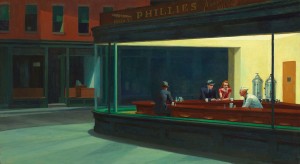Our multiple selves that we construct for others are mostly held together by desires to assert identities that will cast a shadow. We want to be presence: someone who is more cause than effect.
When someone wonders ‘what is the most common deficiency most of us show in our interactions with others?’ a firm response easily comes to mind: we are mostly bad and inattentive listeners. This is mostly because the mantra of our age is to first take care of ourselves. It may be good for our overall mental health to put our interests forward, but it means that there can be no surprise that our interactions often miss what another is saying. Most of us display a common desire to bring conversations back our agenda.
This is an age when standing out can have its own rewards; we routinely honor people who make an impression in the kind of fluency they admire. Our media is populated with these figures. For example, popular journalism feeds on the “interesting” guest. And as more research is confirming, social media often function the same way, offering constructed displays of ostensibly enviable lives. It follows that our own efforts to respond to our judgment that our presence needs to be repaired are motivated to perform a self that will cast a shadow. We want to be presence; someone who is more cause than effect; the one who is the source of attention rather than the one who attends to others.
Our cameras were once used to capture the images of others. Now they are often turned around to create ‘selfies’ that we can pass along the digital food chain.
This summary is too simple, but it suggests that what passes as discourse between equals can best be understood as ‘taking turns.’ The preoccupation of self that defines our age plays out in the simple desire to be at the center of typical exchange, preferencing our judgments and conclusions over interest in giving others space to lay out what are often extended narratives.
The impulse to be heard rather than to hear is unevenly spread across the culture. It seems strongest in adults, which is perhaps why so many young adults are impatient with offers of advice from older family members. The circles of influence for the young are smaller and tighter, leaving less of an appetite for giving time to parents who are ready to assert their authority and credibility. We’ve even turned this pattern into a Hollywood trope: films about the lives of teens rarely allow parents or teachers to be the pivotal influencers they hope to be. Think of Greta Gerwig’s film Ladybird (2017). A slight exaggeration perhaps, but mom and daughter are mostly on different planets. Screenplays like Ladybird typically write older figures as foils more than resources. They are written to be quick to react and to assert their prerogatives. My experience is that this is actually more common with American men than women; men rarely want to give the impression that they are supplicants instructed by another. But the basic pattern of talking past each other is familiar.
A
It’s not that we don’t listen to anyone anymore. Functionally, most of us spend large parts of every day in front of a screen that is asking for attention to spoken or written messages. But this is ‘listening’ at its lowest gradient: often little more than awareness without much comprehension. Peripheral attention to a figure in a video, for instance, is qualitatively a long way from the more active listening that is often needed to produce a conversation that can be enlightening or even transformative. Our excessive attention to packaged media requires only a passive kind of reception, setting us up to be frail listeners when circumstances demand so much more.
The next time you are in a gathering, practice your listening by turning down competing distractions. And focus on giving another your undivided attention. Active listening is work, but it is usually rewarding.
![]()



